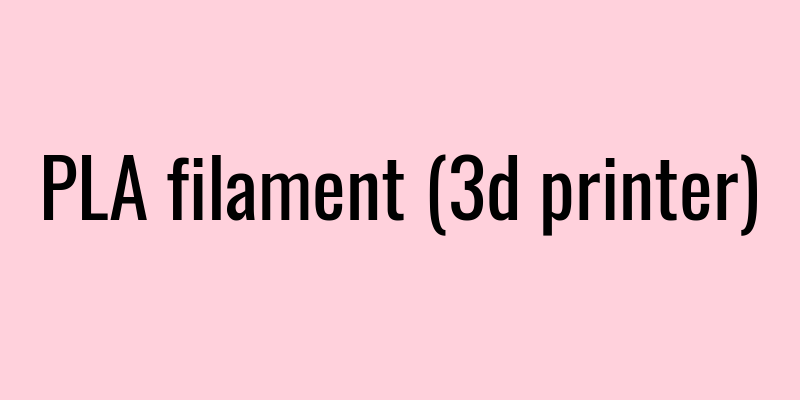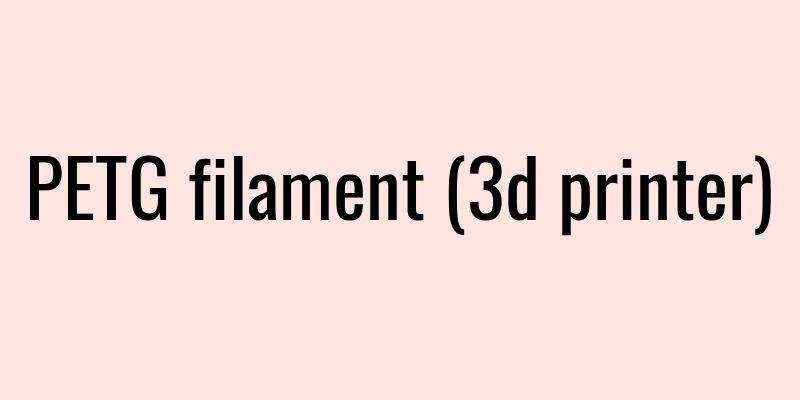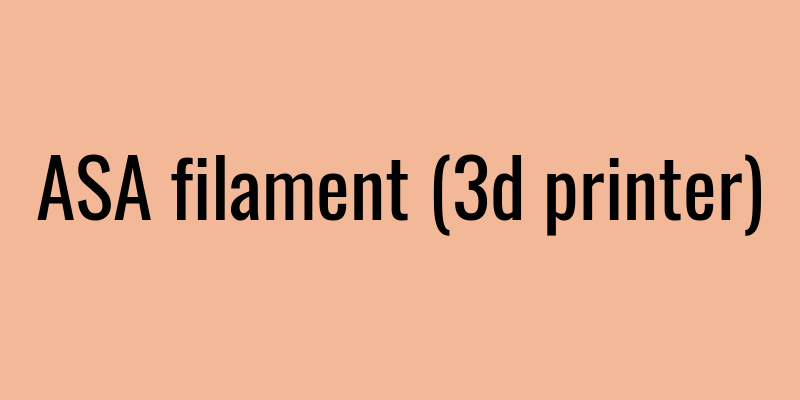The Pros and Cons of Using PLA Filament for 3D Printing
Is PLA the best choice for your 3D printing projects?
PLA filament is one of the most popular materials used in 3D printing today, appreciated for its ease of use and environmental benefits. Derived from renewable resources like corn starch or sugarcane, PLA (Polylactic Acid) stands out as a biodegradable filament, making it an eco-friendly choice for hobbyists and professionals alike. However, while it boasts numerous benefits, it's essential to also consider its drawbacks. In this article, we will delve into the advantages and disadvantages of using PLA filament to help you make an informed decision for your 3D printing needs.
As the 3D printing community continues to grow, the debate regarding the best types of filament intensifies. PLA has gained a loyal following due to its versatility and performance. Despite its numerous strengths, PLA is not without its limitations. Whether you are a dedicated 3D printing enthusiast or a beginner embarking on your first projects, understanding both the pros and cons of PLA filament will empower you to select the most appropriate material for your creations.
Pros
When considering a filament for your 3D printing projects, PLA filament comes packed with a range of impressive advantages that make it a popular choice. Users often rave about its ease of use and versatility, making it perfect for both newbies and experienced enthusiasts. In this section, we'll explore the standout benefits of PLA filament and why it should be on your radar when planning your projects.
Excellent Detail and Quality – Perfect for Intricate Designs
PLA filament shines when it comes to producing detailed and high-quality prints. Its ability to hold fine features allows users to create intricate designs with precision. This quality is particularly advantageous for creating prototypes, visual models, and artistic pieces that demand an impressive level of detail. The smooth surface finish imparted by PLA helps in achieving stunning aesthetics, making it a favorite among designers and hobbyists who require high-quality outputs.
Eco-Friendly and Biodegradable – A Planet-Friendly Choice
One of the significant advantages of PLA filament is its eco-friendliness. Made from renewable resources such as corn starch or sugarcane, PLA is a biodegradable material. This characteristic makes it a preferred choice for environmentally conscious consumers who want to reduce their carbon footprint. When disposed of correctly, PLA can decompose within a few months, as opposed to traditional plastics that can take hundreds of years. Using PLA filament contributes to sustainability in 3D printing, aligning well with modern eco-friendly initiatives.
User-Friendly and Accessible for All Skill Levels
PLA filament is well-known for its ease of use, making it an optimal choice for beginners venturing into the world of 3D printing. It has a lower extrusion temperature, which allows for faster printing with less risk of warping or cracking compared to other filaments. This user-friendliness encourages new users to experiment and perfect their skills without the intimidation that comes from more complex materials. Additionally, with low odor during printing, it creates a pleasant printing environment, making it an accessible choice for classrooms and home projects.
Versatile Color Options – Provide Creative Freedom
PLA filament is available in a vast array of colors and finishes, which allows creators to choose the perfect hue for their projects. This versatility can spark creativity and give designers the ability to produce vibrant and visually appealing prints. Whether it's a matte, glossy, or transparent finish, the range of options caters to various artistic preferences, making it an attractive choice for hobbyists and professionals alike.
Low Odor and Non-Toxic – Safe Printing Environment
One of the significant advantages of using PLA filament is its non-toxic nature and low odor when printed. Unlike some other materials that may emit harmful fumes during the printing process, PLA offers a safer environment for both the user and those nearby. This feature is particularly appealing for home users and educational settings where safety and comfort are prioritized.
Fast Printing Speed – Efficient Workflow
PLA filament is known for its fast printing capabilities, which can significantly enhance productivity. Due to its lower melting temperature and excellent adhesion properties, it can be printed at higher speeds without sacrificing quality. This advantage makes it an efficient choice for prototyping or producing multiple objects quickly, saving both time and costs during the printing process.
Missing a pro?
Let us know which pro you are missing!
Cons
While PLA filament undoubtedly brings numerous benefits to the table, it also has its share of drawbacks that can impact your printing experience. Understanding these disadvantages is crucial for making informed decisions about your 3D printing projects. In this section, we'll delve into the less favorable aspects of PLA filament and unveil what you need to watch out for.
Limited Heat Resistance – Not Ideal for High-Temperature Applications
One notable disadvantage of PLA is its limited heat resistance. PLA filament begins to soften at temperatures around 60°C (140°F), which can be problematic for applications that may encounter heat exposure or require mechanical durability in high-temperature environments. When used in certain projects, such as automotive or outdoor applications, PLA may deform or lose structural integrity, leading to compromised performance. Users need to consider these limitations when choosing materials for functional parts that may encounter heat.
Brittle Nature – Prone to Breakage
PLA filament is known for its rigidity, which results in a brittle nature. While this characteristic can be advantageous for maintaining shape, it can also be a drawback in applications requiring flexibility or impact resistance. Prints made from PLA may shatter or snap if subjected to significant force or stress, limiting its suitability for functional prototypes or mechanically loaded components. This lack of durability makes it essential to consider the intended use of printed objects before opting for PLA filament.
Moisture Sensitivity – Care is Required for Storage
PLA filament is sensitive to moisture, which can impact its printing performance. Humidity can cause it to absorb water, resulting in poor layer adhesion, bubbles, and stringing during printing. Proper storage of PLA filament is crucial to maintain its optimal quality and performance. Users are advised to keep it in airtight containers with desiccants to prevent moisture absorption. If neglected, moisture sensitivity can lead to frustrating printing experiences, resulting in wasted time and resources. Awareness of proper storage techniques is vital for PLA filament users.
Limited Strength – Not Suitable for Heavy Load Applications
While PLA is easy to print and great for many applications, its strength is limited compared to other filaments like ABS or PETG. This makes PLA less suitable for projects that require durability and strength, such as functional parts or load-bearing designs. Users may find that parts printed in PLA can deform or break under stress, which could lead to premature failure in critical applications.
Thermal Expansion – Challenges in Precision Printing
PLA filament can exhibit thermal expansion and contraction during printing, sometimes resulting in warping or dimensional inaccuracies. This behavior may pose challenges in projects requiring precise measurements or tight tolerances. Users need to account for these factors and make adjustments to printer settings or design features to mitigate potential issues, which can complicate the printing process.
Limited Outdoor Durability – Vulnerable to UV Exposure
When exposed to UV light and outdoor elements, PLA can degrade over time. This limitation makes it less suitable for outdoor applications or items that may be subjected to sunlight. Users looking to create lasting outdoor or functional objects may need to consider UV-resistant coatings or alternative filaments that offer better outdoor durability.
Missing a con?
Let us know which con you are missing!
Conclusion
In conclusion, PLA filament has earned its reputation as a favorite among 3D printing enthusiasts due to its numerous advantages, including eco-friendliness, ease of use, and quality output. However, it is essential to recognize its limitations, particularly regarding heat resistance, brittleness, and moisture sensitivity. Ultimately, the decision to use PLA filament will depend on your specific 3D printing goals and requirements. Understanding both the advantages and disadvantages allows you to make an informed choice, leading to successful and satisfying 3D printing experiences.
What do you think?
Do you think the pros outweigh the cons?





